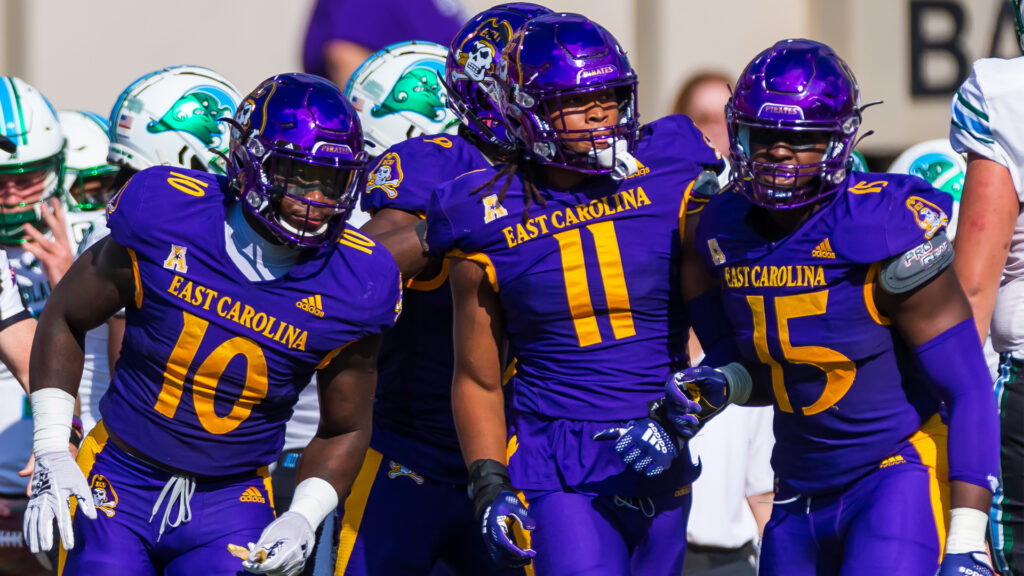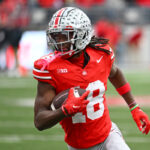Team History
The East Carolina Pirates football team’s inception dates back to 1932, a time when the institution was primarily focused on teacher education. Despite a rocky start, the team’s early years were marked by a relentless pursuit of growth and excellence. This period laid the foundational ethos of perseverance and determination that would characterize the Pirates for decades to come. The initial seasons under Coach Kenneth Beatty and his successors were challenging, with the team struggling to find its footing in collegiate football. However, the adoption of the “Pirates” nickname in 1934 symbolized a turning point, infusing the team with a new identity and spirit that would begin to shape its future trajectory.
Transitioning through multiple coaching eras, the Pirates gradually built a competitive program, highlighted by their first winning season in 1936 and a perfect season in 1941 under Coach John Christenbury. These early successes were not just victories on the field but pivotal moments that helped establish the Pirates as a formidable force in the world of college football. The team’s resilience and ability to adapt through periods of change, including World War II, set the stage for future achievements and the cultivation of a rich football tradition at East Carolina University.
Foundation and Early Years
The foundation of East Carolina’s football program was laid against the backdrop of modest beginnings, with the team struggling to make a mark in its initial seasons. The early years were characterized by significant challenges, including the inability to score in their debut season. However, the team’s first victory in 1933 marked a watershed moment, symbolizing the potential for growth and success. This era also saw the establishment of the team’s identity with the adoption of the “Pirates” nickname, a move that was intended to inspire greater spirit and enthusiasm among its members and supporters.
These foundational years were critical in shaping the future of East Carolina football. The determination and resilience shown by the team and coaching staff during this period laid the groundwork for the development of a competitive and spirited football program. Despite the early obstacles, the foundation laid during these years paved the way for the notable achievements and the strong football culture that would come to define East Carolina University in the decades that followed.
Notable Early Achievements
The Pirates’ early achievements set the tone for the program’s future success. By 1941, the team, under the leadership of Coach John Christenbury, achieved a perfect season, an accomplishment that stood as a testament to the team’s growing prowess and potential. This period was pivotal in demonstrating East Carolina’s capabilities on the football field, signaling the emergence of the Pirates as a competitive force. The subsequent years saw further accomplishments, including the team’s first conference championship in 1953, a milestone that highlighted East Carolina’s ascendancy in collegiate football.
These early achievements were not merely wins but signposts of the team’s burgeoning reputation and the building of a winning tradition. The successes of the 1940s and 1950s helped to elevate the program’s profile, attracting talent and fostering a sense of pride and belonging among the players, coaching staff, and the wider university community. These accomplishments laid a solid foundation for the Pirates, setting the stage for future generations to build upon and continue the legacy of excellence established in these formative years.
Periods of Change
The history of the East Carolina Pirates is marked by several periods of significant change, reflecting the team’s adaptability and resilience. The transition through various conferences, including the entry into the North State Conference in 1947 and later the Southern Conference, exemplified the program’s growth and its increasing competitive stature. Each era brought new challenges and opportunities, from coaching changes to shifts in athletic affiliations, each shaping the program in fundamental ways. The leadership changes, particularly in the coaching staff, were instrumental in navigating these periods of change, with figures such as Pat Dye in the 1970s bringing renewed vigor and success to the Pirates’ football endeavors.
These periods of change were not merely about structural or administrative adjustments but also about the evolution of the Pirates’ identity and ethos. The team’s ability to adapt and thrive amidst these changes speaks to the strength of the program and its foundational principles. Whether it was transitioning through conferences or embracing new leadership, the Pirates demonstrated a remarkable capacity to persevere and excel, a quality that has become a hallmark of East Carolina football.
Championships and Achievements
The East Carolina Pirates have a storied history of championships and significant achievements, marking them as a notable program in college football. From their first conference championship in 1953 to subsequent successes in bowl games and conference titles, the Pirates have consistently demonstrated their competitive prowess. The 1960s and 1970s, in particular, were golden eras for the Pirates, with multiple bowl game victories and conference championships that cemented their status as a formidable force in collegiate athletics. These successes were not just milestones but also moments of pride that united the community and enhanced the university’s reputation on the national stage.
The achievements of the East Carolina Pirates are a testament to the program’s dedication and hard work. The program has not only produced outstanding teams and athletes but also contributed significantly to the broader college football narrative, showcasing the spirit of competition and excellence. The Pirates’ journey through championships and various achievements reflects a commitment to excellence that resonates beyond the field, impacting players, fans, and the community alike. These accomplishments are cherished parts of the university’s history, serving as a source of inspiration and a benchmark for future generations.
Current Roster
The current roster of the East Carolina Pirates reflects a diverse and talented group of athletes, each bringing their unique skills and backgrounds to the team. Updated information on the roster, including player stats, positions, and class years, is essential for fans and analysts alike to understand the team’s composition and potential for the ongoing season.
This roster is a dynamic entity, evolving with each season as players graduate, new recruits join, and others step into more prominent roles. The diversity and talent within the current roster are indicative of the program’s robust recruitment and development efforts, ensuring that the Pirates remain competitive in the collegiate football landscape.
Management and Coaching Staff
The leadership and strategic vision of the East Carolina Pirates’ management and coaching staff are pivotal to the team’s success on and off the field. This group of experienced professionals is responsible for everything from game strategy and player development to recruitment and community engagement.
The coaching staff’s expertise, leadership style, and ability to mentor young athletes significantly impact the team’s performance and the overall direction of the football program. As the face of the team’s management, these individuals embody the values and aspirations of the East Carolina Pirates, guiding the program towards its goals and maintaining its tradition of excellence.
Home Stadium Information
Dowdy-Ficklen Stadium, the home of the East Carolina Pirates, is not just a venue for football games; it is a symbol of community and pride for the university and its supporters. The stadium’s evolution, from its initial construction to subsequent expansions and renovations, reflects the growth of the football program and its increasing fan base.
With a current seating capacity of 50,000, the stadium offers an electrifying atmosphere for home games, where fans come together to support the Pirates. This venue plays a crucial role in the team’s identity, providing a formidable home-field advantage and serving as a gathering place for the East Carolina community to celebrate their team and shared heritage.
-
*********** ***** ******* *** ***** ** ************ **** ********* *****dd.mm.yyyy 00:00 PM
-
****** *********** **** ** ***** ****** *** **** *** ******: ********* *** ******* *** ****'* ****dd.mm.yyyy 00:00 PM
-
*********-***** ********: **** 6 **** *** ***** *** * ********* **** 7dd.mm.yyyy 00:00 PM
-
**********-************ *******: ****** ****ć, ******* *******, *** * ********* ********** ********dd.mm.yyyy 00:00 PM
-
********* **** ********* ** *** ***: ********* *** ********* ** ****** ******** **. *** *** *****dd.mm.yyyy 00:00 PM
-
****************** ******* **********: *** ********' **** ****dd.mm.yyyy 00:00 PM







